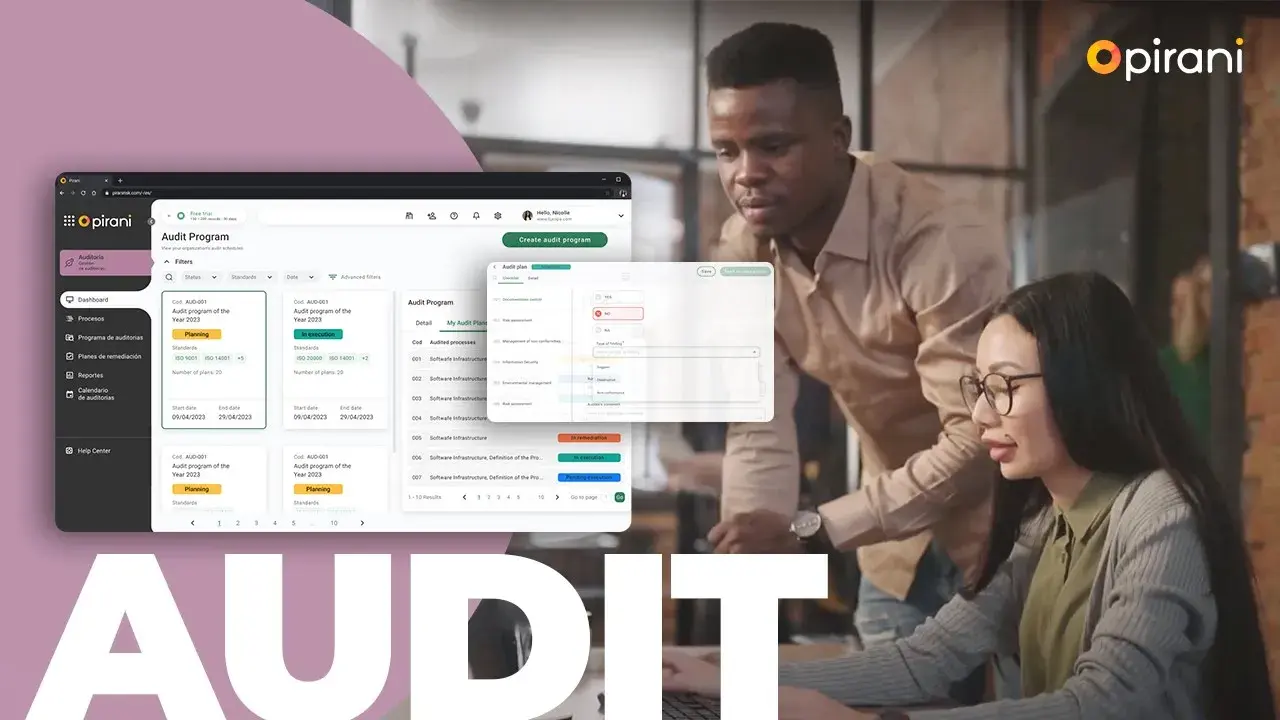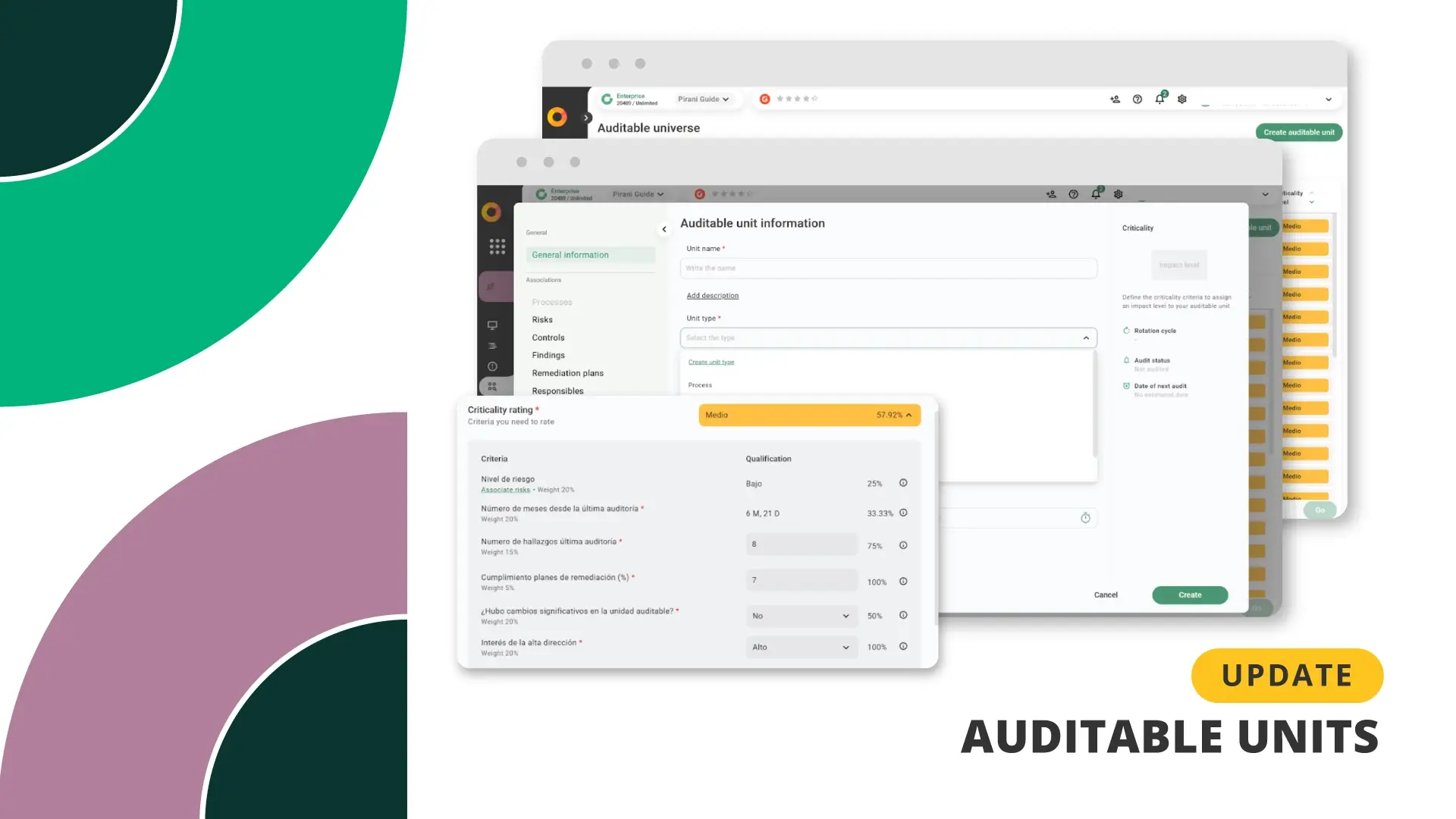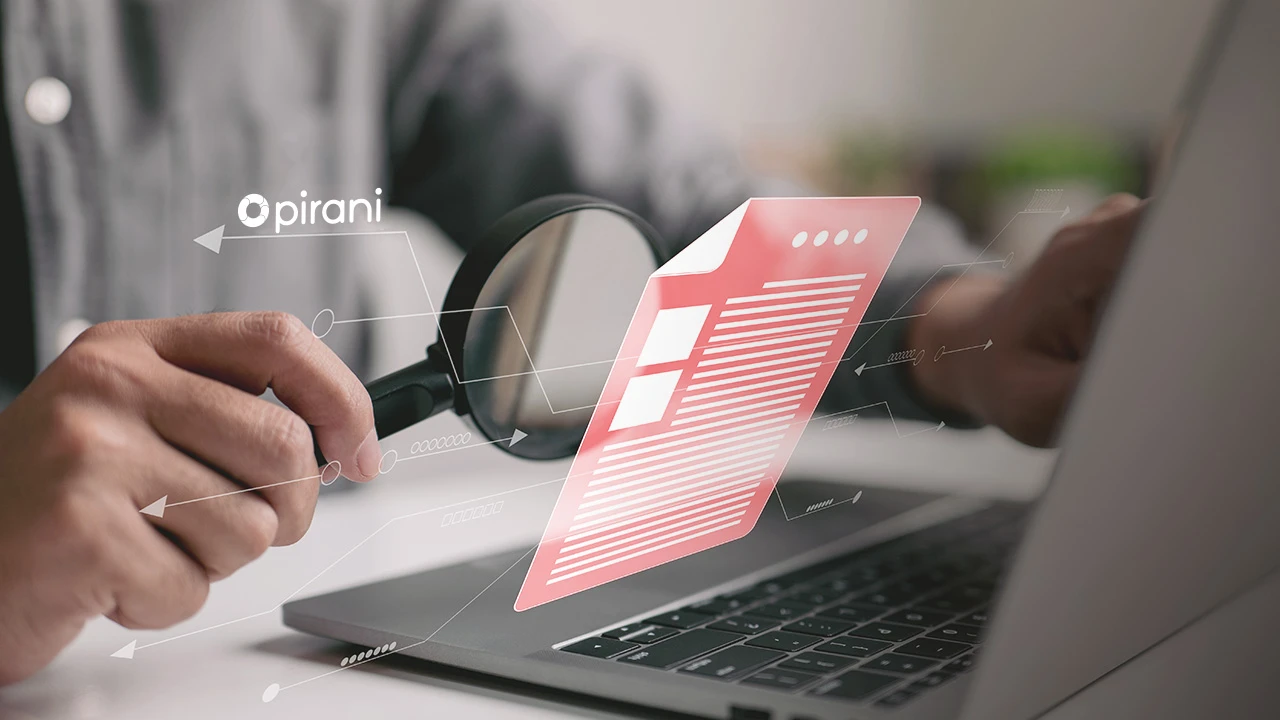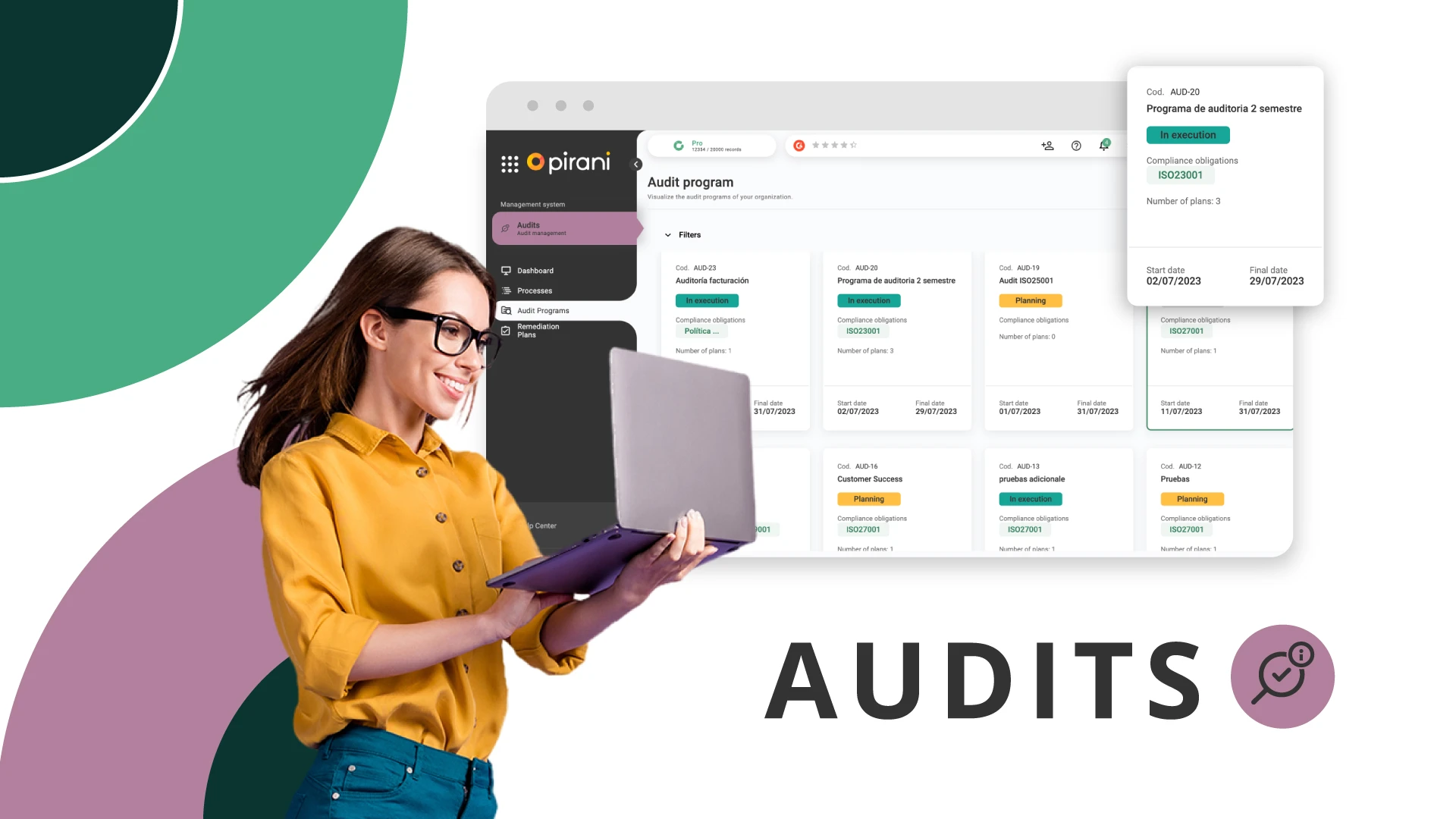Control Risk Audit Process: Roles of Auditor and Auditees

How do you know if everything is going well within your organization? How do you identify internal risks or failures? The answer is through risk audits. This essential process allows business organizations to identify and assess risks that may affect their continuity in the market.
However, executing internal audits can be complex, overwhelming, and exhaustive if the parties involved need to help to understand what to do and expect during this experience.
Read on and find out today how an auditor should act, what role the auditee plays, and how using an audit module could simplify the process and create a valuable and practical assessment experience to improve business performance.
Let's dive in!
What is the risk audit process?
A control risk audit is a meticulous process of evaluating the performance of an organization's departments, areas, or levels. Its purpose is to provide critical information through an objective and independent review of the performance of systems, internal processes, and business activities.
What vital information is obtained? Internal audits enable the organization's leaders to identify the risks to which the organization is exposed, help achieve operational efficiency, and support regulatory compliance. According to the IIA, in 2022, internal staffing budgets increased by 45% for audit functions. Why? Internal audits help companies protect themselves and their assets and ensure they operate safely and effectively.
As you can see, a risk audit, like any process, involves a set of people following a series of steps to obtain a result. An auditor whose role goes beyond reviewing the internal operations and, on the other hand, the auditees.
Find out more!
What is the role of the auditor during a risk audit?
The auditor undoubtedly plays a leading role during the execution of a control risk audit, as they must ensure that reliable and objective information is gathered through a systematic and rigorous process that allows them to determine the effectiveness or otherwise of internal controls and compliance with the organization's policies and regulations, in addition to creating a comfortable and valuable review experience for all members.
Let's see what they need to do!
- Plan: Every good auditor should plan the objectives and scope of the audit, create the teams and assign the responsibilities of each one. He must also establish the evaluation procedures to be used.
- Evaluate: the auditor is responsible for evaluating and testing the internal control measures implemented by the organization to determine whether they are created correctly or whether their application effectively mitigates risks.
- Collect data: the auditor must collect sufficient and appropriate evidence to support the conclusions and assertions. How to do it? The information is obtained through documents, conversations with staff, observation, and operations analysis.
- Analysis of the information found: the data determines if vulnerabilities in the systems or processes represent a potential danger.
- Presentation of results: the auditor presents to the organization's leaders a report with the main findings, risks encountered, conclusions, and recommendations for the effectiveness of internal controls.
- Follow-up: the auditor's work continues after the delivery of the report; they must regularly verify that the recommendations have been effectively implemented.
What happens to the auditees? Do they sit and wait for the results? No, read on and find out what they should do!
What is the role of the auditee?
In developing a risk control audit, the auditees are all members of the area to be reviewed, who have specific obligations to ensure that the evaluation and review process is carried out satisfactorily.
Here are some of the responsibilities to be fulfilled by the auditees:
- Cooperate: the auditee must allow the auditor access to all information and documentation requested during the process.
- Provide reliable information: all data provided to the auditor on your area's operations and internal controls must be accurate and complete.
- Clarify doubts: the information provided may require some technical knowledge, making it complex for the auditor; in this case, the auditee should answer any questions or doubts to ensure that they have understood the information.
- Provide evidence: the auditee should provide evidence to support the implementation of internal control measures.
- Ongoing communication: in case there is any significant change in operations or activities during the execution of the audit.
- Do not interfere! It is vital that the auditee respects the review process and does not hinder the auditor's work to make the evaluation as accurate as possible.
But is there a way to automate and simplify the process? Yes, let’s see how!
How does our internal audits module work?
As we mentioned, the audit involves a rigorous process of exhaustive review, which can be complicated for the auditor and somewhat intimidating for the auditees if it needs to be done correctly. To simplify its realization in Pirani, we have developed a unique internal audits module that gives the organization more control and better monitoring of its operations to identify hazards and ensure compliance.
Let's see how it works!
The module allows you to automate the design, planning, and execution of your audits in one place, from the control parameters to evaluation and the lines of defense to implement. The main advantage is that it allows you to run efficient audits, i.e., at lower cost and time.
In our module, you will have available in one place all the necessary information, ready to analyze, which is stored securely and can be accessed at any time.
The most innovative part is that it is a flexible and customizable tool that adjusts to the needs of each organization. Users can define the evaluation criteria, the questions to be asked, and the observations and comments regarding their findings.
In addition, it is easy to use, as it allows you to evaluate internal systems and processes, set a performance score, include observations, and, most importantly, evidence to support the conclusions with the option to attach files.
Finally, the module allows you to incorporate suggestions to optimize the organization's performance and prevent risks. The best part is that you can track and monitor corrective actions, from dates to achieve them, indicate who oversees the changes, etc. Take control of your audits!
Ready for your next risk control audit?
Give it a shot to our risk audit module and see what it can do!
You May Also Like
These Related Stories

Risks that may arise in an internal audit

How to make an internal audit plan?

More Accurate Audits with Auditable Units

Internal Audit Management: 8 Essential Criteria

Stages and phases of internal audit


No Comments Yet
Let us know what you think